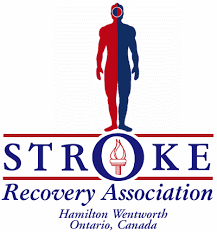
As reported by LENNY BERNSTEIN of THE WASHINGTON POST on March 22, 2012
It was March 15, 2010 the day before Brott’s 45th birthday when she suffered a stroke that affected the entire left side of her body. Even though they still comprise a tiny proportion of all stroke victims, nearly 2 per cent of women aged 35 to 54 suffer a stroke according to the most recent National Health and Nutrition Examination Survey. That is up half of 1 percent since a decade earlier. The stroke rate for women in this age group has tripled, but the rate for men has remained the same.
It is unknown why so many relatively young women are having strokes, but obesity is the prime suspect. According to USC neurologist Amytis Towfighi statistics showed that the proportion of women with abdominal obesity had risen from 47 percent to 59 per cent in a decade.
Researchers have learned that exercise can help younger stroke victims such as Brott regain function, even years after they are stricken. A well known 2011 study supports the therapeutic approach like the one Brott stumbled upon when she returned to the gym.
”The secret to recovery in stroke is to continue working on your balance, continue working on your upper extremities, continue working on your lower extremities,” said Pamela W. Duncan, a neurology professor at Wake Forest Baptist Medical Center in Winston-Salem, N.C., and co-leader of the Locomotor Experience Applied Post-Stroke (LEAPS) research project.
The LEAPS researchers had originally set out to determine whether supporting stroke victims in harnesses to help them walk on treadmills would improve mobility more effectively than structured physical therapy at home, assisted by a therapist.
But after testing 408 stroke survivors Duncan unexpectedly discovered that the harness and treadmill produced approximately identical results as the structured at-home therapy. Even more interesting was another finding: A group of patients whose therapy was delayed for the purpose of comparison also showed improvement when their therapy began.
“No matter when you start an intense, progressive program, it works,” said Katherine J. Sullivan, a neuroscientist and an associate professor of physical therapy at the University of Southern California.
This is good news for stroke survivors, because delays in rehabilitation are inevitable for those who must be stabilized medically before they can even attempt minimal exercise.
“Rehabilitation can have some impact even months to years after a stroke,” said Ralph Sacco, past president of the American Heart/ Stroke Association. “The brain can recover and relearn. Physical activity can open up new pathways.”
The 795,000 strokes that Americans suffer annually vary widely in severity and location in the brain, with effects that range from death to little or no impairment. Stroke is the fourth-leading cause of death in the United States; women tend to survive more often than men but are more likely to be disabled, according to Towfighi.
The HANDTUTOR and LEGTUTOR systems are recently introduced medical devices that assist stroke patients in regaining proper balance and to bring upper and lower extremities back to normal activity.
The system, including the ARMTUTOR and 3DTUTOR, provides detailed exercise performance instructions and precise feedback on the patient’s efforts. Controlled exercise of multijoints within the normal movement pattern prevents the development of undesired and compensatory joint movement and ensures better performance of functional tasks.
The accompanying software system consists of motivating and challenging games that allow the patient to practice isolated and/or interjoint coordination exercises. The dedicated rehabilitation software allows the physical and occupational therapist to fully customize the exercises to the patient’s movement ability. In addition, the OT and PT can make objective follow up reports on their patient’s progress. Rehabilitation aims to optimize the patient’s motor, sensory and cognitive performance and allows the patient to better perform everyday functional tasks to improve their quality of life. The TUTORS are also used for patients suffering from Parkinson’s, MS, CP and a variety of disabling ailments. Telerehabilitation allows the recovering patient to continue his physical therapy at home after he is stabilizd.
The TUTORs are certified by the FDA and CE. See WWW.HANDTUTOR.COM for more information.
The system is used by many leading rehabilitation centers worldwide and has full FDA and CE certification. See WWW.HANDTUTOR.COM for more information.